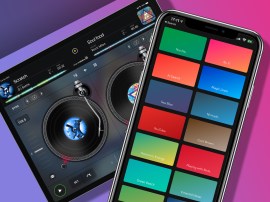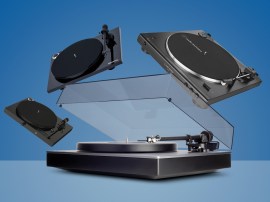Pioneer CDJ-1000MK3 review
It’s the CD deck favoured by the world’s best DJs, but can the CDJ-1000MK3 really out perform its gadget-laden rivals?
With the CDJ-1000, Pioneer has pulled off quite a feat. It’s managed to rise to the top of a mountain of rival CD DJ decks to become the preferred player in clubs worldwide. It’s virtually an industry standard.
Best of the best?
That’s not to say it’s the best CD DJ deck in every way, but the club circuit does need standards – as a DJ you don’t want to have to learn how to use a new deck at every gig. While some rivals aim to out-gun the Pioneer deck with a barrage of features, the CDJ-1000 stays focussed on the job in hand and ultimately wins on practicality and ease of use.
It’s a front-loading CD player (plays audio CDs and MP3 data CDs) with a familiar tempo/pitch slider where you’d expect to find it, allowing independent adjustments to playback speed and pitch. Transport controls are on the left, with the main Play/Pause and Cue buttons picked out with backlighting.
One very handy feature is the ability to save cue points to SD card – keep your SD cards with your CDs and you only need to set up the cue points once, rather than every time you rock up at a new venue.
The platter that matters
In the centre there’s the platter, the outer rim used for nudging a track forwards or back to keep it in sync, the inner surface used to stop, spin or scratch the track as if it were vinyl. Unlike the Denon DN-S3500, the platter itself isn’t motorised, so there’s no feedback, so the feel is rather loose and floppy compared to a handling vinyl.
A colour LED display at the top gives a rough visualisation of the track. It’s not a full waveform display, but a useful guide in the absence of the visible grooves of a record. Loop In and Out buttons offer a quick and easy route to looping a section of a track on the fly, and so long as your timing’s right it works well. You can also tweak the start and end points of the loop if you didn’t nail it first time.
Most of the other knobs are there to allow you to set up the deck to suit your own style – sensitivity of the jog wheel, pitch fader, brake and start time for example. It all amounts to an accomplished CD/MP3 deck that won’t wow you with tricks, but by the same token won’t blind you with science.
Related reviews



